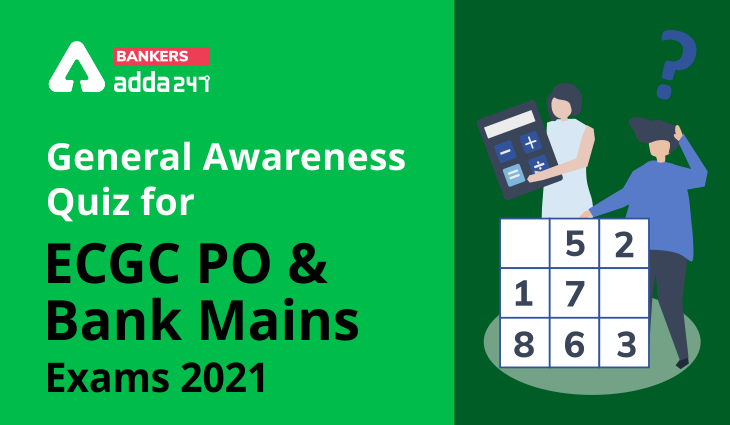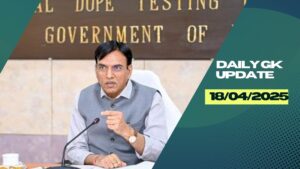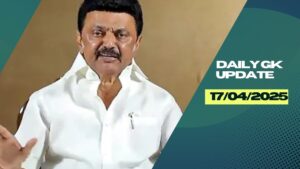Q1. What are the objectives of monetary policy of RBI?
(a)Price Stability
(b)Control of Inflation
(c)Economic Growth
(d)Exchange Rate Stability
(e)All of these
Q2. Who is the chairperson of the Monetary Policy committee of India?
(a)Prime Minister
(b)Finance Minister
(c)Chief Economic Advisor
(d)RBI Governor
(e)None of these
Q3. Which of these is a Quantitative instrument of Monetary Policy?
(a)CRR
(b)Repo rate
(c)SLR
(d)All of the above
(e)None of these
Q4. Monetary policy transmission refers to____
(a)Banks passing the benefits of policy rate reduction to the consumers
(b)Government of India not reducing the tax rates
(c)RBI not reducing CRR and SLR on regular basis
(d)Both B & C
(e)None of the above
Q5. How many times RBI announces monetary policy in a year?
(a)Five times
(b)Four times
(c)Three times
(d)Six times
(e)Two times
Q6. What do we call the instruments of monetary policy which directly affect the quantity of money supply?
(a)Money instrument
(b)Qualitative instrument
(c)Quantitative instrument
(d)Both A & C
(e)None of the above
Q7. How many members in monetary policy committee?
(a)7 members
(b)6 members
(c)8 members
(d)5 members
(e)9 members
Q8. Which of the following is the Selective Tool of monetary policy?
(a)Statutory Liquidity Ratio
(b)Consumer Credit Regulation
(c)Cash Reserve Ratio
(d)Open Market Operation
(e)Bank Rate
Q9. As per the agreement on Monetary Policy Framework, which inflation measure is used by RBI for the purpose of Monetary Policy.
(a)WPI
(b)CPI Urban
(c)CPI Rural
(d)CPI Combined
(e)None of the above
Q10. Which one of them indicates the main objective of monetary policy in India?
(a)Over all Monetary Stability
(b)Reduce Poverty and Achieve Stability
(c) Growth with Stability
(d)Both A & B
(e)None of the Above
Q11. In monetary policy committee, RBI governor has
(a)only a vote
(b)only casting vote
(c)both vote & casting vote
(d)All of the above
(e)None of these
Q12. Which of the following monetary policy is applied in an economy during deflation?
(a)Tight Money Policy
(b)Printing of Currency Notes
(c)Selling of Government Securities by Central bank
(d)Helicopter Drop
(e)None of these
Q13. Which of the following is not the objective of RBI’s monetary policy?
(a)Maintenance of domestic price level
(b)Reducing the impact of business cycles
(c)Stability of external value
(d)To prevent the commercial banks from making excessive profits
(e)None of these
Q14. Monetary Policy is Known as which type of body?
(a)Unconstitutional body
(b)Constitutional body
(c)Non-statutory body
(d)Statutory body
(e)None of these
Q15. When an expansionary monetary policy does not encourage economic growth it is referred as?
(a)Deficit Financing
(b)Sterilization
(c)Market Destabilization Scheme
(d)Liquidity Trap
(e)None of these
Solution:
S1.Ans(e)
Sol. Three objectives of monetary policy of Reserve Bank of India (RBI) (1) Price Stability or Control of Inflation (2) Economic Growth (3) Exchange Rate Stability.
S2.Ans(d)
Sol. The chairperson of the Monetary Policy committee of India is RBI Governor.
S3.Ans(d)
Sol. The quantitative instruments are: Open Market Operations, Liquidity Adjustment Facility (Repo and Reverse Repo), Marginal Standing Facility, SLR, CRR Bank Rate etc.
S4.Ans(a)
Sol. The monetary transmission mechanism is the process by which asset prices and general economic conditions are affected as a result of monetary policy decisions.
S5.Ans(b)
Sol. The MPC is required to meet at least four times in a year.
S6.Ans(c)
Sol. Quantitative instrument call the instruments of monetary policy which directly affect the quantity of money supply.
S7.Ans(b)
Sol. The committee comprises six members – three officials of the Reserve Bank of India and three external members nominated by the Government of India.
S8.Ans(b)
Sol. Qualitative Instruments are also known as the Selective Tools of monetary policy. They are: Fixing Margin Requirements, Consumer Credit Regulation, Publicity, Credit Rationing, Moral Suasion, Control Through Directives, Direct Action.
S9.Ans(d)
Sol. As per the agreement on Monetary Policy Framework, CPI Combined Inflation measure is used by RBI for the purpose of Monetary Policy.
S10.Ans(c)
Sol. The main objectives of monetary policy are to achieve Stability and Growth. S11.Ans(c)
Sol. RBI governor is ex of officio chairman monetary policy committee. RBI governor has right to vote as well as right to casting vote in case of a tie.
S12.Ans(d)
Sol. Helicopter Drop is applied during deflation. Helicopter drop refers to a last resort type of monetary stimulus strategy to spur inflation and economic output.
S13.Ans(d)
Sol. Objectives of Monetary Policy are: Stability of external value, Maintenance of domestic price level, Reducing the impact of business cycles.
S14.Ans(d)
Sol. The Monetary policy committee is a statutory body established under the provisions of RBI act 1934.
S15.Ans(d)
Sol. When an expansionary monetary policy does not encourage economic growth it is referred as Liquidity Trap.
Practice with Crash Course and Online Test Series for ECGC PO & Bank Mains 2021:
- ECGC Online Coaching Classes for Probationary Officier 2021
- ECGC PO Mock Tests 2021 – Banking Online Test Series (With Solutions) by Adda247
- Bank Test Pack Online Test Series
Click Here to Register for Bank Exams 2020 Preparation Material




 Daily Current Affairs 19th April 2025, I...
Daily Current Affairs 19th April 2025, I...
 Daily Current Affairs 18th April 2025, I...
Daily Current Affairs 18th April 2025, I...
 Daily Current Affairs 17th April 2025, I...
Daily Current Affairs 17th April 2025, I...





